
Lemons are such an amazing and versatile ingredient, it’s always a good idea to have some on hand.
The sweet and sour flavoring of all parts of the lemon fruit (juice, pulp, and peel) adds a bit of zing to an array of culinary recipes – from entrees to beverages to desserts.
Lemons are rich in vitamin C and have a high citric acid content, and so they are also excellent as a cleaning aid, in homemade beauty treatments, and to help soothe a sore throat.
A single lemon tree can produce as much as 600 pounds of fruit per season. In USDA hardiness zones 8 to 11, lemon trees can be grown outdoors. For those in cooler climates, dwarf lemon trees in pots can be hauled outside during summer and brought indoors to overwinter under artificial lights.
In the produce aisle, peak lemon production occurs from November through to May. When they are in season, keep an eye out for sales and you can bring them home by the crate.
Regardless of how you procure them, a surplus of lemons is a terrible thing to waste.
When life gives you lots and lots of lemons, use these techniques to preserve each and every last one.
1. Salt Preserved Lemons
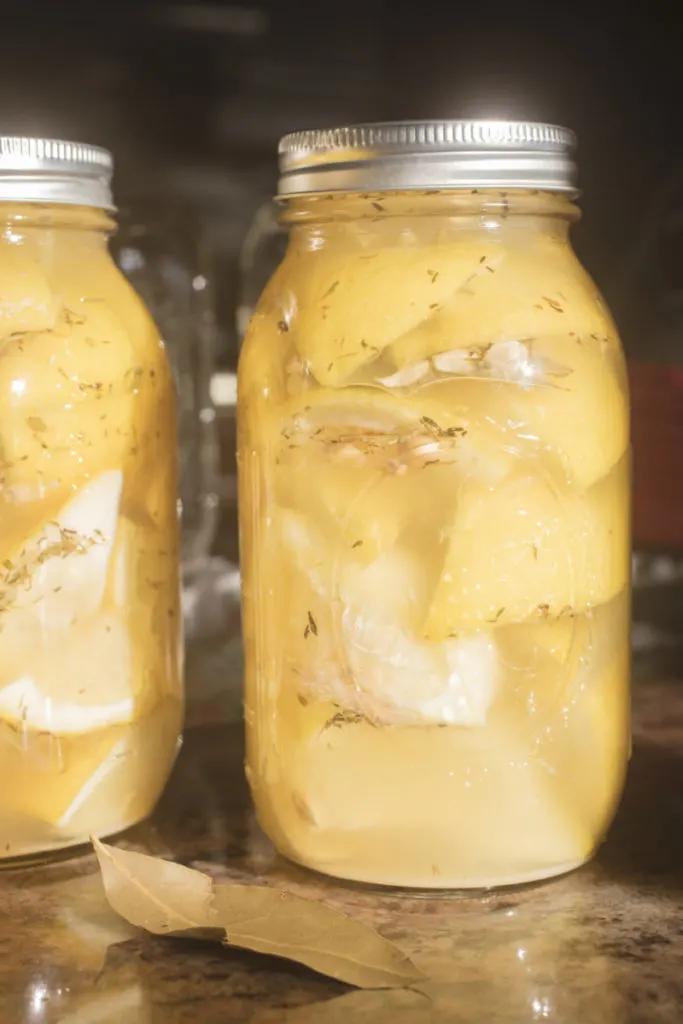
Preserving lemons with salt is an ancient method that originated in the Middle East.
Lemons brined in salt and their own juices undergo a bit of a transformation. The salt draws out the juices and softens the peel over time, lessening the sourness while adding citrusy sweet notes to any dish.
When ready to use, lemon slices are rinsed of salt. The pulp and flesh is removed and discarded, leaving the softened rinds. The lemon peels can then be sliced up and used in tagines, sauces, soups, desserts, and more.
Because you’ll be consuming the peels, its best to use organic lemons when salt preserving.
To make, you just need 6 to 8 whole lemons, 4 tablespoons of salt, and a quart-sized mason jar:
- Sterilize mason jars by boiling them in water for 15 to 20 minutes.
- Clean whole lemons thoroughly by scrubbing the rind under cool water.
- Slice off the lemon nubs to create a flat top and bottom.
- Stand the lemon on end and slice it crosswise, but do not cut it all the way through. When cutting an “x” in the fruit, stop slicing when you are about half an inch from the bottom.
- Open up the lemon and sprinkle a couple of pinches of salt in the interior.
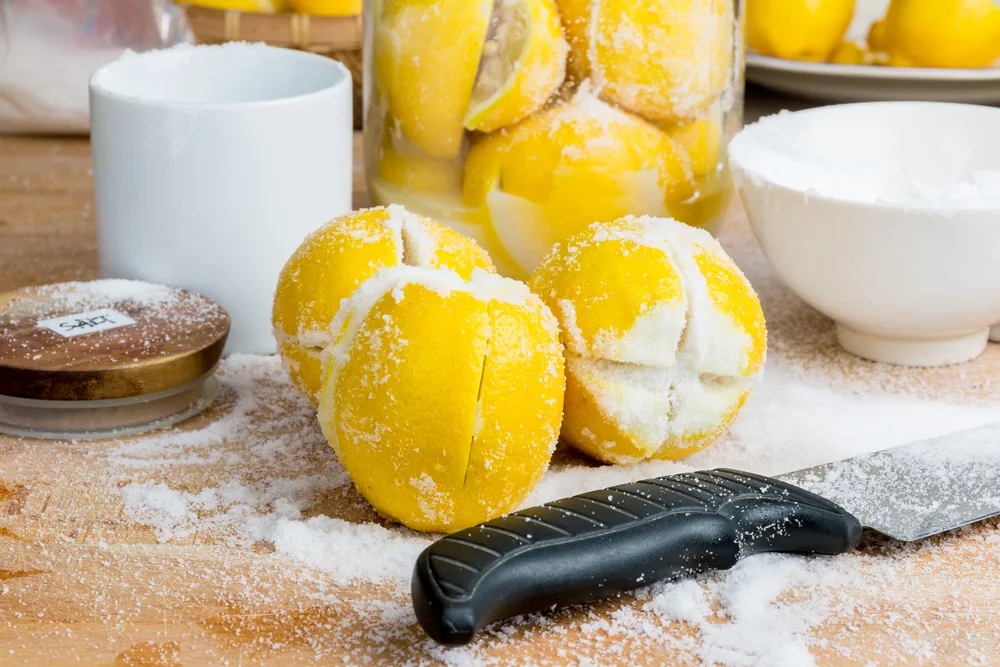
- Repeat with the rest of the lemons and pack them tightly into the jar. Use a wooden spoon to push them down and release their juices.
- Once packed, add remaining salt to the jar. If the lemons are not submerged in juice, top off with freshly squeezed lemon juice.
Seal the jar and store in a cool, dry spot for 1 week, then move to the refrigerator. Salt preserved lemons will keep in the fridge for a year.
2. Freezer Lemons
An easy way to preserve whole lemons, lemon slices, lemon juice, and lemon zest is to simply pop them in the freezer.
Although frozen lemons retain their mouth-puckering taste, when thawed out they can become a bit mushy. Toss them into your chosen recipe when they are still somewhat frozen and they will be much easier to work with.
Whole Lemons

Freezing lemons whole is a snap. Just thoroughly wash and dry the lemons before putting them in the freezer.
When ready to use, whole lemons can be grated with a cheese grater. Use an oven mitt to protect your hand from the icy cold lemon as you grate away.
Once the entire lemon is in small bits, transfer these to a glass jar or plastic bag and place it back in the freezer. Use it by the spoonful to flavor dishes and drinks.
Lemon Slices
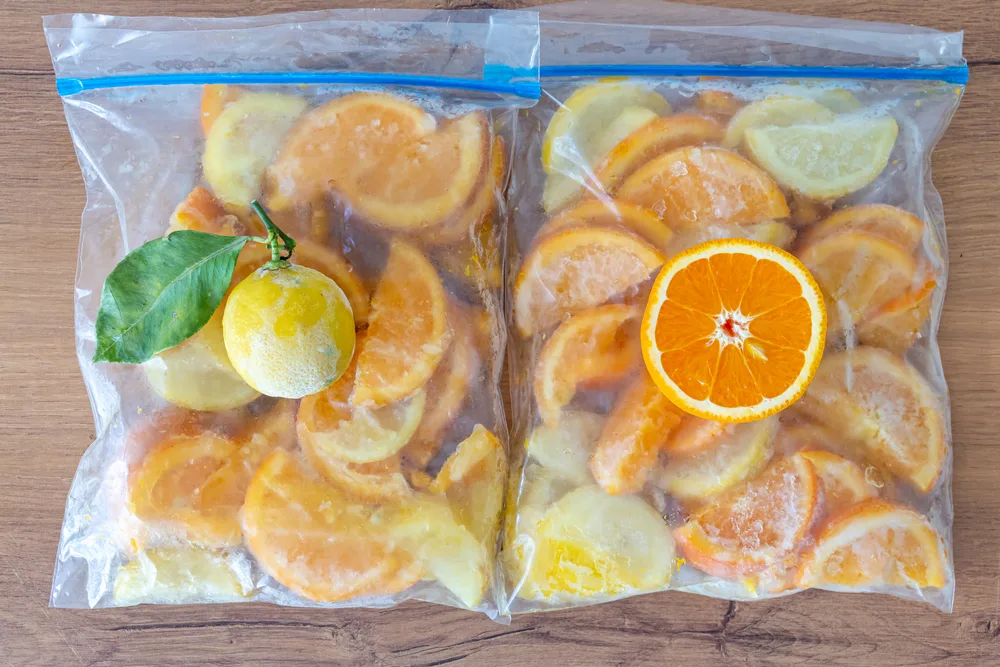
Freezing lemons slices is much the same as freeze preserving peas and berries.
Slice up the lemons and place them on a parchment lined baking sheet. Space them out so that none of the slices are touching. Place the baking sheet in the freezer overnight.
When the slices are completely frozen, toss them in a jar or bag and put them back in the freezer.
Lemon Juice
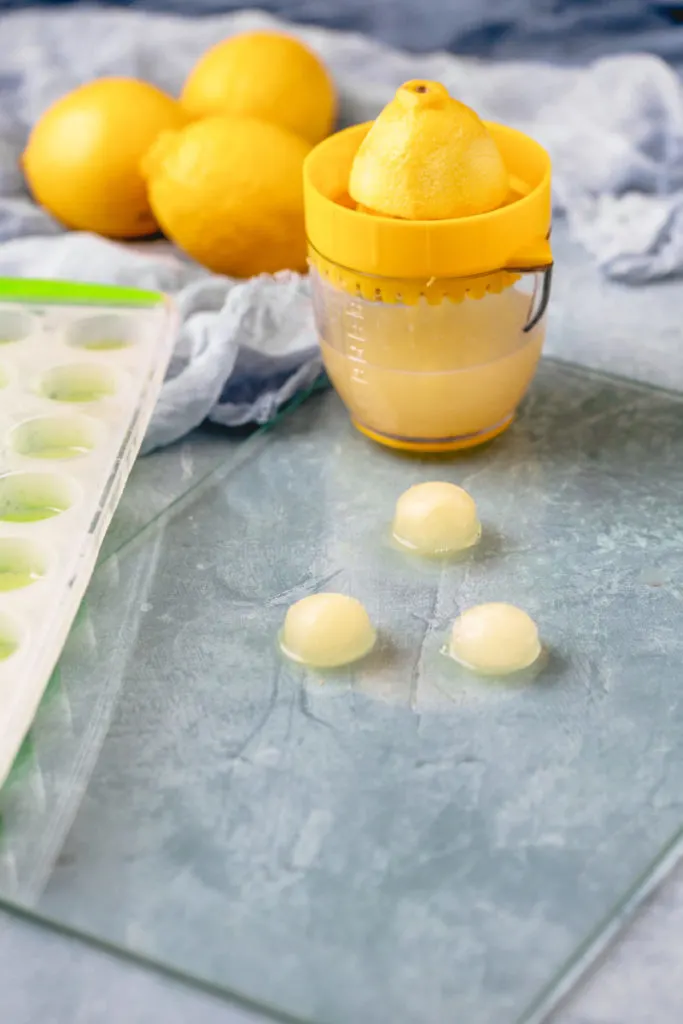
Freshly squeeze lemon juice with your favorite press, manual juicer, or machine. To get the most juice from the fruit, warm up the lemons to room temperature and firmly roll them on the countertop. Strain out the seeds and pulp.
Lemon juice can be poured into small cups or an ice cube tray. Place them in the freezer overnight. Once frozen, they can be removed from cup or tray and placed in a plastic bag. You can also use mason jars to freeze lemon juice, just leave some headroom at the top of the jar before freezing.
Lemon Zest
Zest up your lemon peels with a zesting tool. Avoid zesting the pith, with is the bitter white part just beneath the yellow rind.
Place lemon zest in a plastic bag and pop it in your freezer.
3. Dehydrated Lemon Slices & Lemon Zest
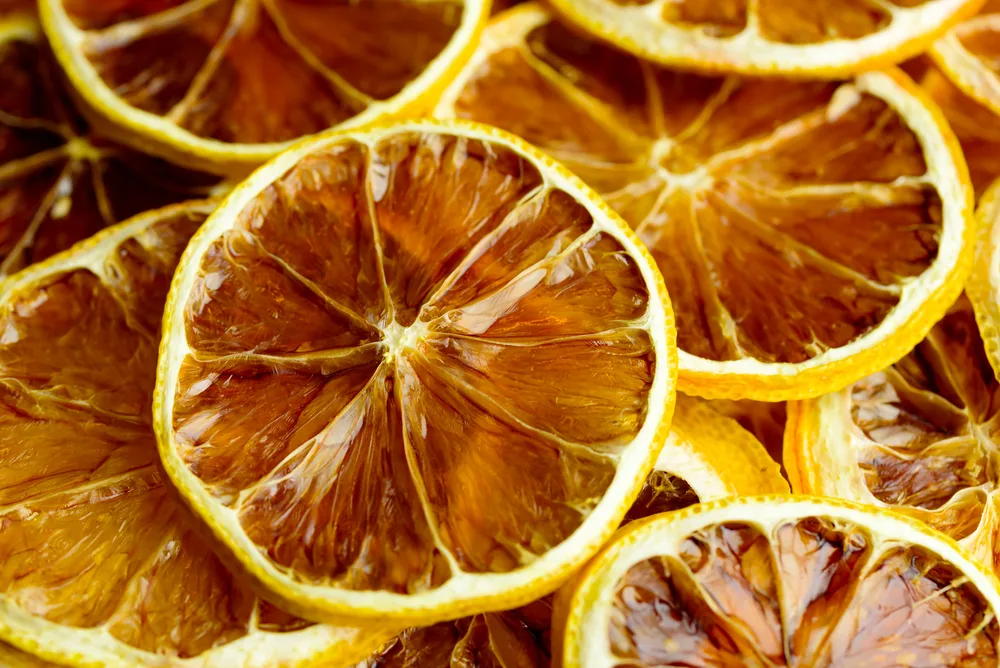
For a preservation technique that will keep for years, dehydrating is the way to go. You can use a dehydrator or an oven, or set them out in the sun if your climate is hot and dry.
To dry lemon slices, cut lemons ¼ inch thick. Dehydrate at 125°F for 10 hours, or until slices can be snapped in half.
Use dried lemon slices to make tea, flavor water, and as a topping for roasted meats. Dehydrated lemons are good for crafts too. You can add them to potpourris or string them up around the home as a holiday decoration.
For dried lemon zest, line your dehydrator or baking sheet with parchment paper before added the zest. Dehydrate at 95°F for 4 to 6 hours. Lemon zest will crumble when completely dry.
Dried lemon zest can likewise be added to teas, drinks, and even a relaxing bath.
4. Canned Lemons
Lemons canned in syrup helps extend their shelf life by 6 to 9 months. After that, they are still quite edible but start to lose their flavor.
Prep the lemons by first removing the peel along with the white pith. Pull individual lemon segments apart, like an orange, discarding the seeds and the inner membrane.
To counter the tartness of the lemons, make a heavy syrup by combining water and sugar at a 1:1 ratio. Bring the syrup to a boil for about a minute, or until the sugar is totally dissolved.
Once the syrup is hot, add the lemon segments to the pot and cook for 3 to 5 minutes. Using a ladle, pack the lemons into sterilized mason jars, topping it off with syrup while leaving a half inch of headspace. Firmly screw on the lids and process in a water bath canner for 10 minutes.
Remove jars from the canner and let them cool on the countertop overnight.
Lemons canned in syrup are sweet enough to eat straight from the jar. Try them in fruit salads, or as a topping for yogurt and ice cream.
5. Lemon Extract
Lemon extract is a concentrated, shelf stable solution made from vodka and lemon zest.
One teaspoon of lemon extract is roughly the equivalent of the zest from two lemons, so it’s best to use it sparingly.
It’s wonderful for adding lemon flavoring to water, teas, cocktails, and other beverages that could use some perking up. It’s also great for baking lemony treats like lemon bars, lemon meringue, and lemon pound cake.
To make, combine the zest of 4 lemons with 1 cup of vodka in a quart-sized mason jar. Vigorously shake it up each day for one month, then strain out the zest and transfer the liquid to another clean mason jar.
Store lemon extract in a cool, dark place. It will keep for 3 to 4 years before it begins to lose its flavor.
6. Lemon Vinegar
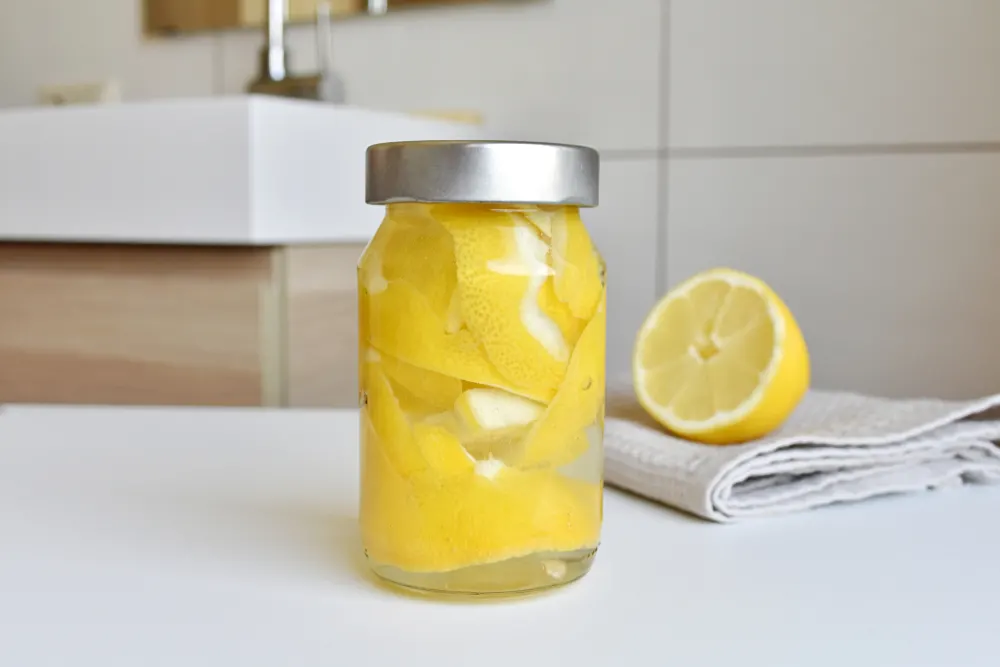
Lemon vinegar is a simple yet powerful all-purpose household cleaner.
This non-toxic, all natural cleanser provides a deep cleaning to many surfaces around the home – including windows, mirrors, floors, countertops, kitchen appliances, bathroom surfaces, and more. This formula is highly acidic so avoid using it on marble and granite.
It’s easy to make too. Using a large jar with a lid, add as many lemon peels as will fit inside and cover with distilled white vinegar. Screw on the lid and let it infuse.
After two weeks, strain out the lemon peels. Fill a spray bottle halfway with lemon vinegar and the rest with plain water.
7. Lemon Jam
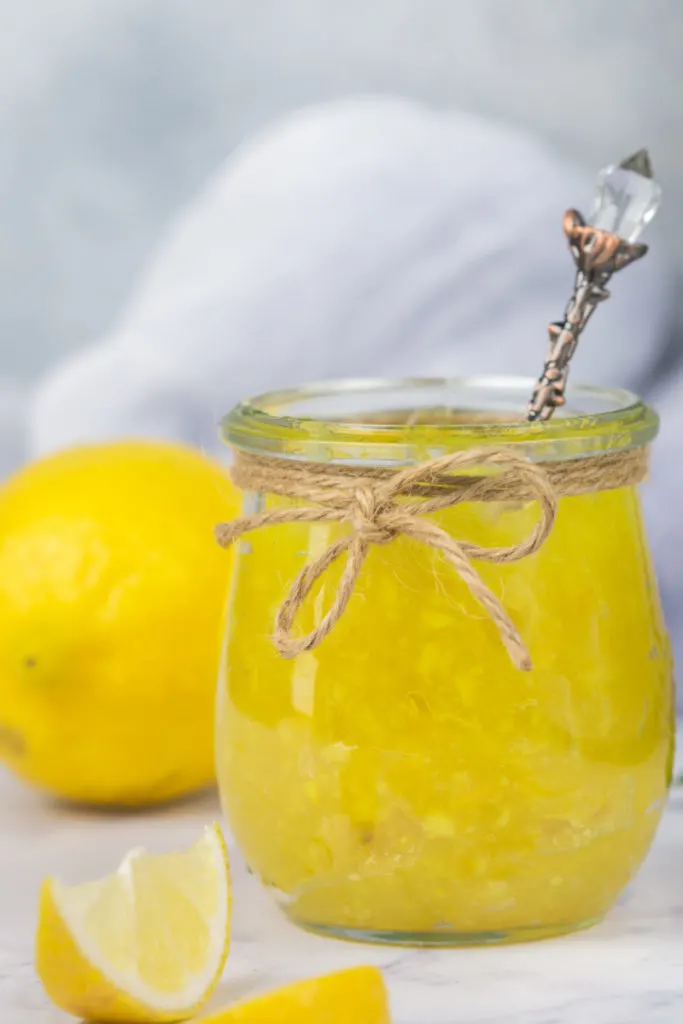
Lemon jam is tart and subtly sweet. It’s excellent paired with toast, yogurt, roasted chicken, and dessert crepes.
This recipe calls for lemons, lemon juice, and sugar – no pectin required.
Store finished lemon jam in the fridge for up to a month, or the freezer for six months.
Get the recipe from One Good Thing.
8. Lemon Curd
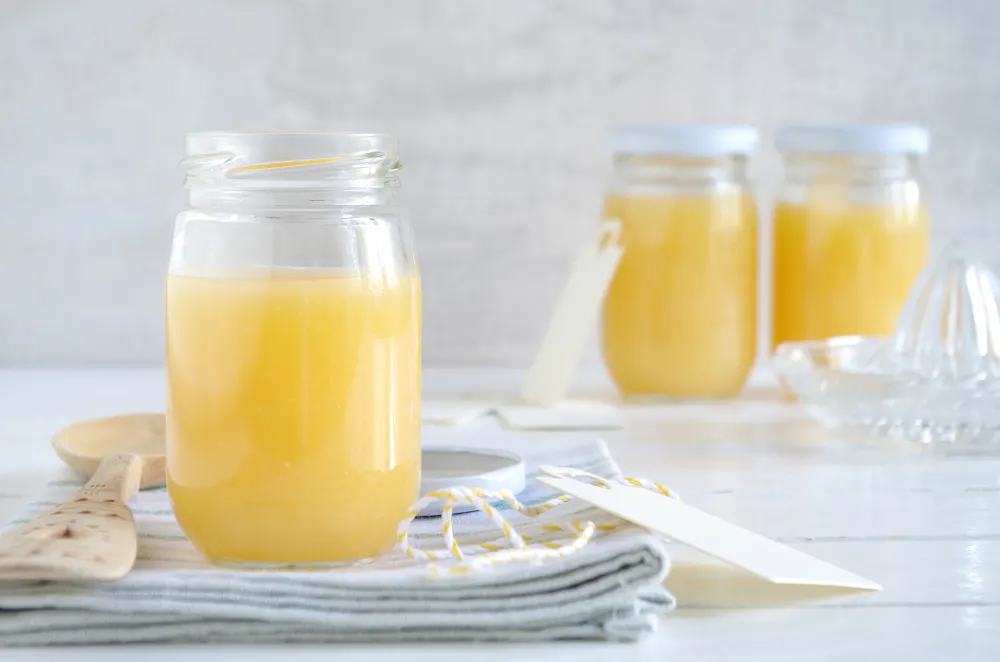
Sweet, tangy, smooth, and creamy, lemon curd is a delicious concoction that can be used with a wide variety of breakfast foods and desserts.
To make, you’ll need eggs, lemon zest, lemon juice, sugar, butter, and salt.
Once you’ve created this silky goodness, use it as a topping for breads, pancakes, waffles, ice cream, and cookies. It can be a filling for parfaits, cakes, tarts, cupcakes, and so much more.
Store lemon curd in the fridge for up to a week, or in the freezer for one month.
Get the recipe from The Recipe Critic.
9. Candied Lemon Peel
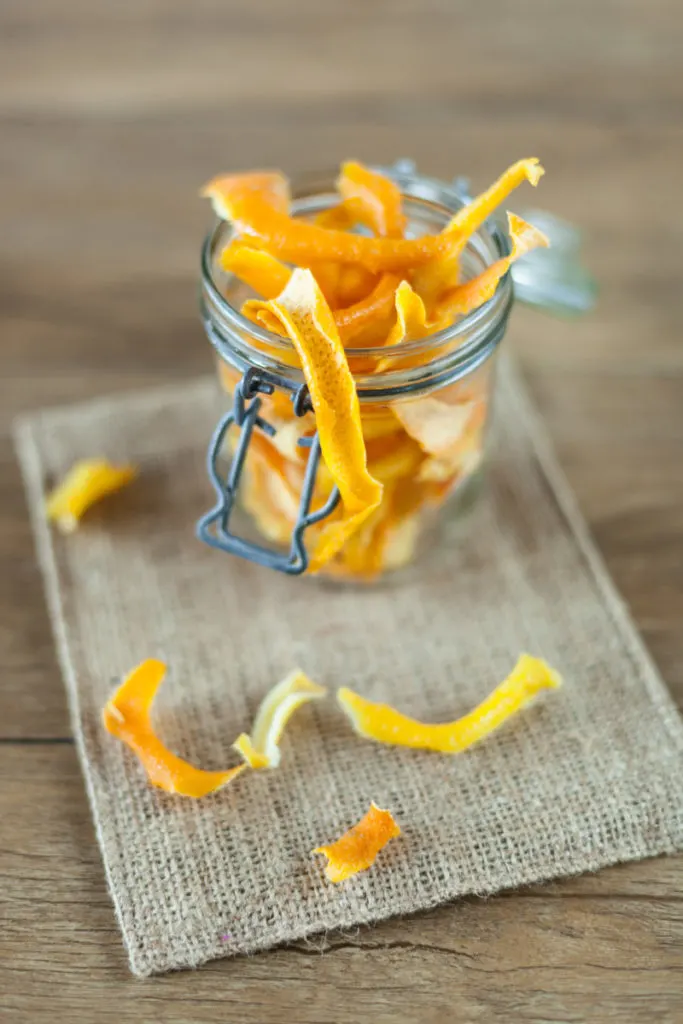
Candied lemon (or orange or grapefruit) peels are an old timey treat that require just sugar and citrus fruits.
Eat candied lemon peels on their own, or as a garnish for ice cream and other desserts.
Candied lemon peels can be stored in a jar with syrup in the fridge to keep them soft. Or for crunchy peels, stow them in an airtight container in the cupboard.
Get the recipe from All Recipes.
10. Lemon Wine
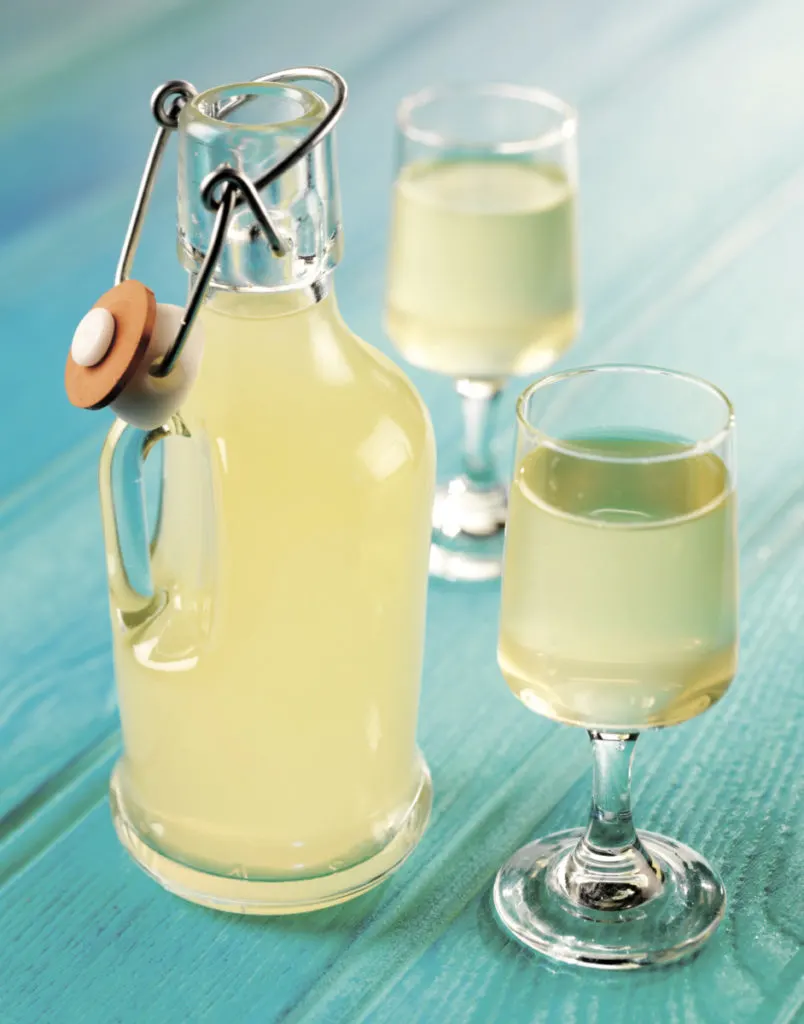
Making wine from lemons is a delicious way to use up an overabundance of fruit while supplying yourself with a heady brew.
Lemon wine is light, citrusy, and refreshing. It pairs very nicely with fish and pasta dishes.
Made up by the gallon, this recipe calls for 10 lemons, a gallon of filtered water, 1 teaspoon of wine yeast, 5 cups of sugar, and a half cup of chopped raisins. The raisins are an important ingredient since they provide tannins and add body to the finished wine.
Once the lemon wine is bottled, allow it to age for at least 3 months before imbibing.
Get the recipe from Swapna’s Cuisine.

Get the famous Rural Sprout newsletter delivered to your inbox.
Including Sunday musings from our editor, Tracey, as well as “What’s Up Wednesday” our roundup of what’s in season and new article updates and alerts.

